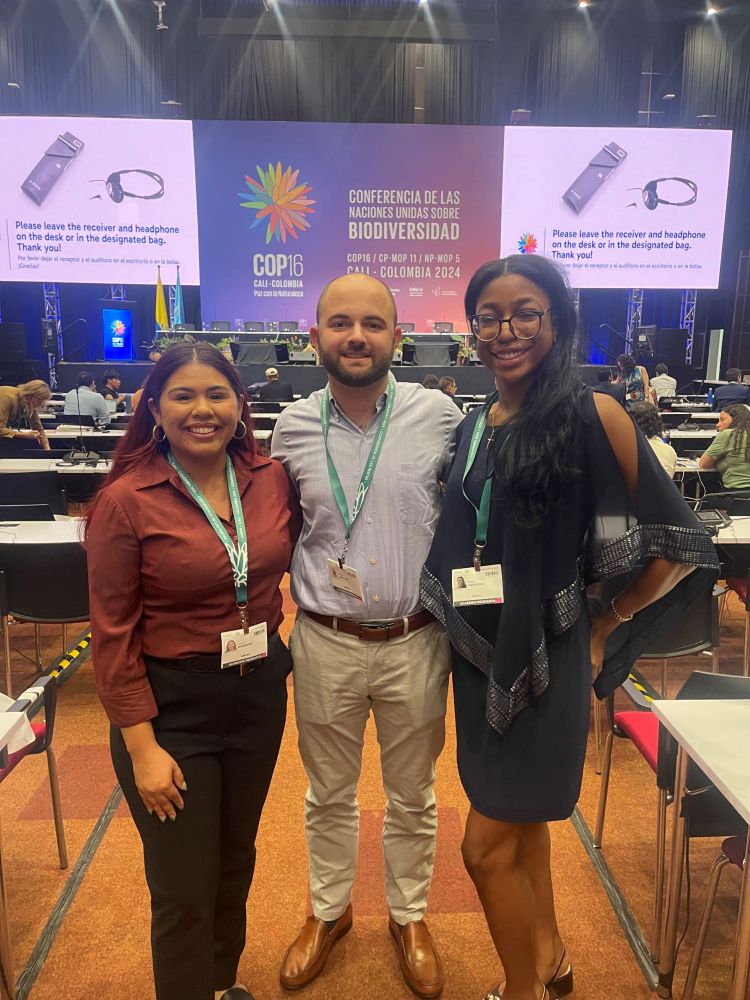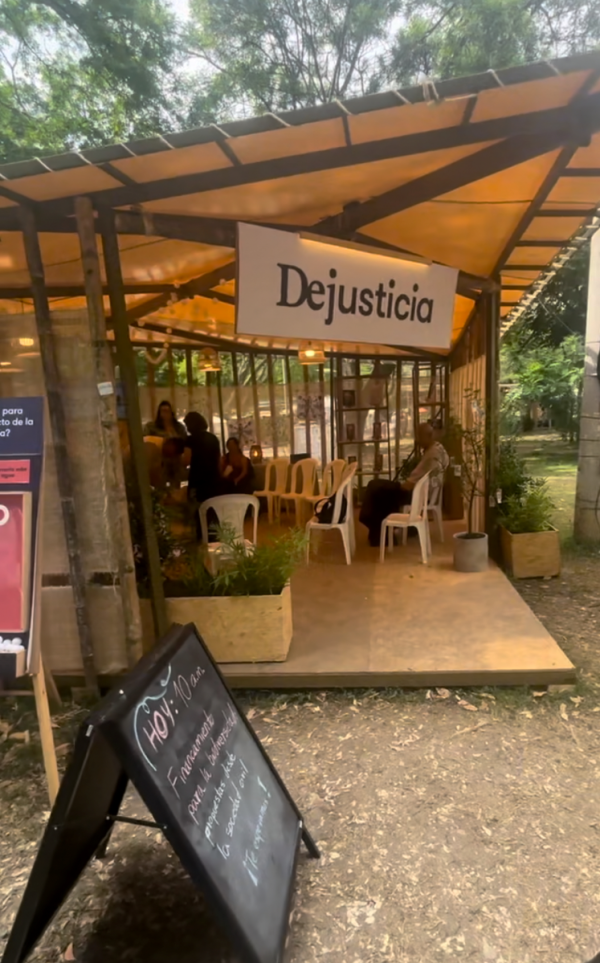Three students from Stanford Law School’s International Human Rights and Conflict Resolution Clinic recently served as official observers at COP16 in Cali, Colombia. Their experience is helping to bolster their clinic work with Colombian human rights organization Dejusticia – and provided a front row seat to the world’s highest-profile environmental negotiations.
Jasmine Betancourt, Victoria Osanyinpeju, and Nissim Roffe Piket (all JD ’26), along with with Clinical Supervising Attorney Shaw Drake, had access to COP16’s Blue Zone, where country representatives spent two weeks in small groups and plenary sessions working to stem the tide of global biodiversity degradation. The approximately 180 participating nations at what is formally known as the Conference of the Parties to the Convention on Biological Diversity had a formidable mandate: to turn the commitments of the 2022 Kunming-Montreal Global Biodiversity Framework into concrete actions.

“The sheer scale of the conference was somewhat daunting at first – how do you even begin to understand the mechanics of coordinating priorities across hundreds of nations, each with unique needs and challenges?” says Osanyinpeju. “But it was fascinating to watch delegates debate the phrasing in guiding documents, word by word, line by line. While their precision seemed painstaking, it highlighted just how much is at stake for each country in creating an inclusive framework.”
The observer opportunity was facilitated by the Clinic’s longtime partnership with Dejusticia, with which the clinic has worked on projects on behalf of migrants, among other human rights initiatives. “This was the biggest COP ever, with upwards of 25,000 delegates and observers in attendance,” Drake says. “The opportunity to attend gave students first hand insights into this global legal process and helped further our work with Dejusticia to bring a rights-based perspective to biodiversity debates.”
“Our partnership with Dejusticia is aligned with the clinic’s focus on community-led, interdisciplinary advocacy,” adds Clinic Director and Assistant Professor Gulika Reddy. “While the impacts of climate change on Indigenous and other populations are significant, the integration of human rights considerations into scientific biodiversity discussions has historically been limited, though this is gradually changing,” she says. “Our vision is to equip the next generation of advocates with tools to address human rights issues. This opportunity allowed our students to engage in interdisciplinary advocacy alongside Dejusticia, integrating a human rights lens in environmental protection efforts.”
Spirited debates and groundbreaking ideas
“Starting from day one of the conference, I knew that my time working with Dejusticia at COP 16 was going to be a core experience of my time at SLS,” says Betancourt, who is interested in possibly doing human rights work after SLS.
But that’s not to say the largest biodiversity summit in the world always provided edge-of-your-chair excitement: “The negotiations in the contact groups usually involved projecting a document to a big screen so that the delegates could edit it live. The entire meeting involved often-tedious discussions over which specific words or phrases to include,” Betancourt says. “It was a reminder of the value of what we are taught to do as lawyers: consider every angle, every nuance, every word.”
In the publicly accessible Green Zone, spirited debates and groundbreaking ideas swirled constantly, she adds. “There were an incredible number of side panels as well as booths set-up inside the conference space where organizations could share outcomes of their work and their advocacy points. Many presentations covered novel arguments to protect biodiversity. There was so much energy.”

‘The people’s COP’
The student-observers closed their time at COP16 by giving a presentation at Dejusticia’s Green Zone kiosk and shared their “behind the scenes” Blue Zone experiences. “The Colombian government called this ‘the people’s COP,’” Drake says, “with the goal of making it more accessible and to bridge the gap between the high-level negotiations and the need for more public understanding of what is at stake. It was valuable for us to participate in Dejusticia’s efforts to bring the Blue Zone out to the Green Zone and increase transparency for public engagement.”
Roffe Piket, was struck by the contrast between the delegates “nitpicking through working documents” in the Blue Zone and bold arguments for change being voiced elsewhere. “Just outside the walls of the formal party negotiations, organizations and advocates were pushing forward groundbreaking dialogue on issues like recognizing the legal rights of nature and facilitating Indigenous-led conservation efforts,” he says. “This helped me understand the big picture, understand where the conversation is being pushed forward, and how we can be part of a coordinated effort for change.”
Next steps
Betancourt, Osanyinpeju, and Piket are spending the remainder of the quarter drafting a report for Dejusticia that outlines the major commitments that came out of COP16 and analyzes the commitments as they relate to broader international legal obligations, including the rights of Indigenous people. “We are particularly interested in making sure that the conversation around human rights is not forgotten in the conversations about biodiversity, which can lean toward science and sometimes neglect the human angle,” Drake says.
For more information
This story was originally published by Stanford Law School.